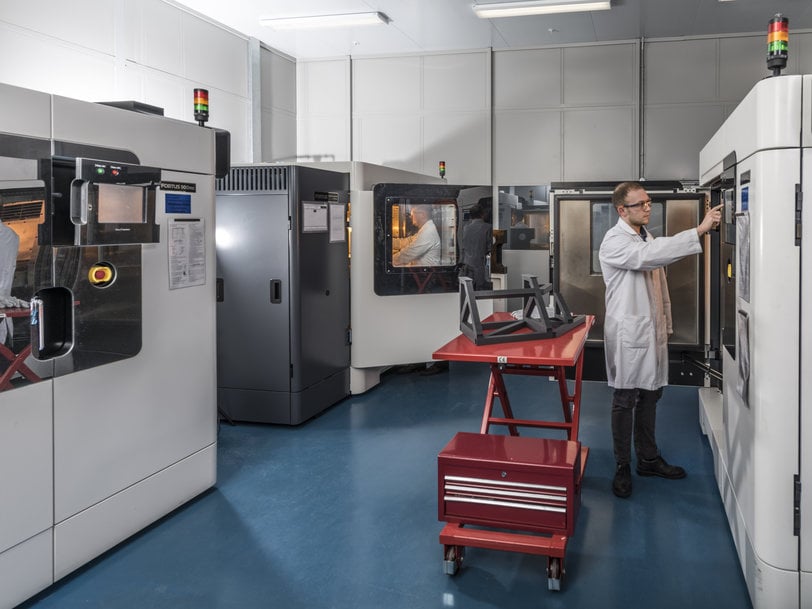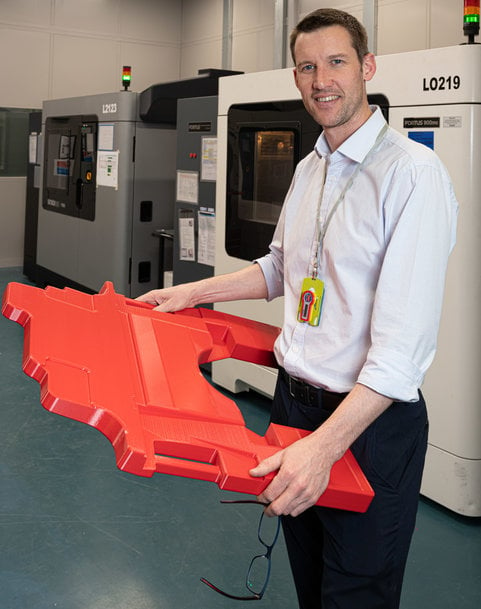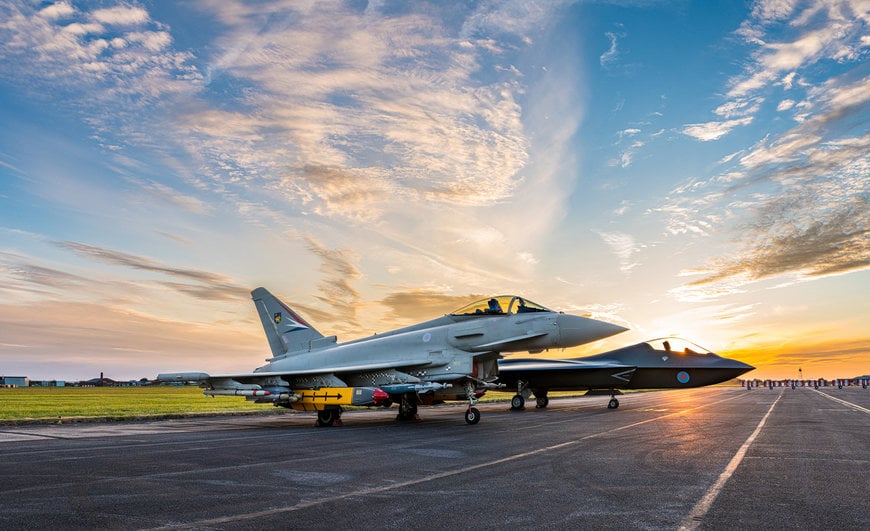www.ptreview.co.uk
15
'20
Written on Modified on
BAE SYSTEMS INSTALLS FOURTH STRATASYS F900 3D PRINTER TO SUPPORT FACTORY OF THE FUTURE INITIATIVE
Growing use of additive manufacturing for prototypes, tooling and end-use parts significantly reduces cost and lead time compared to traditional methods.

British defence, security, and aerospace giant BAE Systems (LON: BA) has added a fourth Stratasys (NASDAQ: SSYS) F900 3D Printer to its manufacturing site in Samlesbury, UK, in a continued effort to reduce costs and improve production agility.
Along with its existing F900 line-up, the latest installation will run around the clock as an integral part of BAE’s transformative “Factory of the Future” initiative, a cutting-edge facility in Lancashire which brings together the latest advances in technology and manufacturing to work seamlessly with human operators in a first-of-its-kind, fully connected way. Today, Stratasys industrial-grade FDM additive manufacturing is used across aircraft ground equipment operations for a wide range of applications spanning space models and design verification prototypes, manufacturing tools such as jigs and fixtures, and final end-use parts.
Optimizing aircraft production with additive manufacturing
According to BAE Systems, use of additive manufacturing across these applications is making production more flexible, faster and helping to reduce costs. Indeed, when using its F900 3D Printers to manufacture production tools, the company says that it is witnessing ‘significant cost and lead time reductions’ against those of traditional manufacturing methods.
“Our Factory of the Future programme is all about driving the future of fighter aircraft production with disruptive technologies and we’re working closely with our suppliers and wider industry to meet the challenges the UK Government has set out to us. Stratasys FDM additive manufacturing plays an important role in this initiative, as it helps us meet our overall company objectives to reduce costs and time-to-market,” says Greg Flanagan, Additive Manufacturing Operations Lead, BAE Systems Air.

Greg Flanagan, pictured with a 3D printed Typhoon cockpit floor cover produced in Stratasys ABS material on the F900
BAE Systems’ latest F900 installation will not only increase 3D printing capacity, but also help exploit new 3D printing materials for tooling applications. This includes carbon-fiber-filled FDM Nylon 12CF material, which is used to create robust yet lightweight repair and development tools for the production line.
According to Flanagan, FDM-based 3D printing technology in particular offers an opportunity to decrease the up-front cost of tooling for new products. This is especially so with items such as drill tools, repair tools and other development tools that are often needed in small numbers.
“This technology allows us to innovate many of our traditional manufacturing processes,” he says. “We can rapidly 3D print one-off parts for new products, replace tools more easily and cost-effectively, and maintain production operations when hardware is delayed. If supply chains become disrupted, having this production power in-house also enables us to be more agile as a business and continue to best serve the needs of our customers.”

Stratasys FDM additive manufacturing is used across ground equipment operations for the Typhoon fighter aircraft
BAE Systems also has found great success in identifying traditionally manufactured applications that can be enhanced, or in some cases replaced, with high-performance 3D printing materials. This includes utilizing durable ABS and ASA materials for a range of aircraft ground equipment, such as cockpit floor covers for the Typhoon fighter aircraft. “With our F900, the thermoplastic covers can be made much faster than traditionally manufactured versions and are a lot lighter and easier to move for the ground crew, so it improves efficiencies within the maintenance, repair and overhaul process. An added bonus is that they can be printed in red – the color of all ‘remove before flight’ components,” he adds.
The latest F900 was purchased from Stratasys’ local partner Laser Lines, through whom BAE Systems has been a Stratasys customer since 2006.
Yann Rageul, Director Manufacturing Solutions EMEA at Stratasys, said, “BAE System’s Factory of the Future programme is a prime example of innovative companies seeking to exploit the latest advanced manufacturing technologies and processes to enhance traditional production as we know it. We continue to collaborate closely with the team at BAE to explore new solutions that further expand the application use of additive manufacturing within production – which will help to address and solve the company’s current and future manufacturing challenges.”
www.stratasys.com

